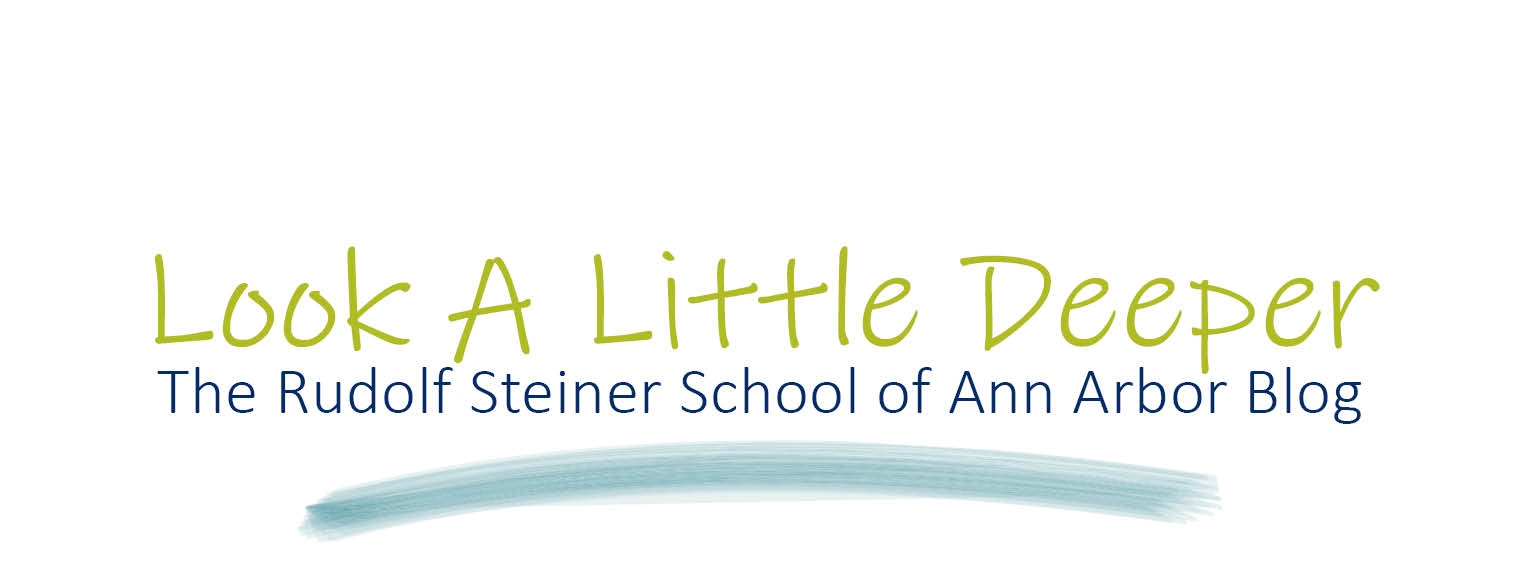

Waldorf Graduates Pursue Meaningful Careers
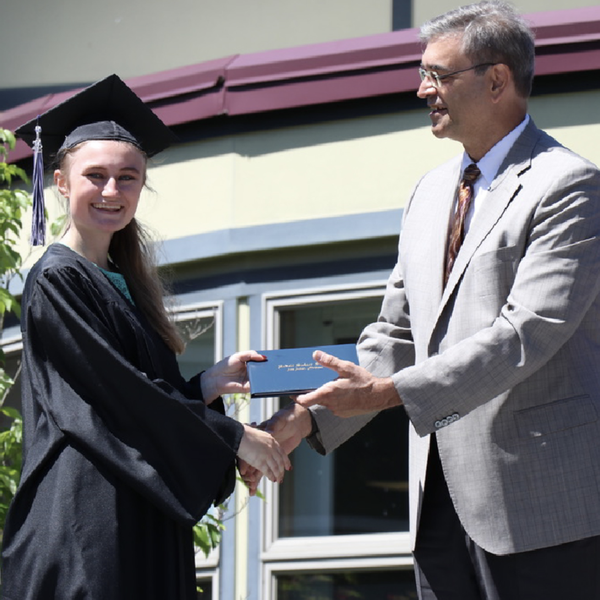
Will My Child Succeed After Waldorf High School? The Research Says Yes
Choosing a high school is a critical decision, and parents often wonder: Will this education prepare my child for college, career, and life?
For families considering Waldorf high schools, this question is especially relevant. With experiential learning, seminar-style discussions, and an interdisciplinary curriculum, can Waldorf truly equip students for fields like medicine, law, technology, and business?
Decades of research say yes.
Waldorf Graduates Excel in Higher Education and Careers
A 60-year study (Survey of Waldorf Graduates, Phase II, Mitchell & Gerwin, 2007) found that:
- 94% of Waldorf graduates attend college.
- 42% major in science-related fields—more than double the national average.
- Many earn advanced degrees in medicine, law, engineering, business, and the arts.
- Alumni thrive in fields ranging from finance and research to entrepreneurship and sustainability.
Waldorf Alumni Spotlight: Science in Action
After earning a degree in Earth Systems Engineering from the University of Michigan, Gavin Chensue ('06) joined the NOAA Commissioned Officer Corps, leading critical climate studies worldwide.
"Steiner education gave me a taste of everything. When I needed direction in college, I remembered how much I loved studying weather and geology—and that led me to where I am today." - Gavin Chensue (RSSAA '06), Research Engineer at SRI International, Former NOAA Corps Officer
His story highlights how Waldorf graduates succeed in STEM, combining curiosity and real-world problem-solving to make a global impact.
Read the full studies:
- Survey of Waldorf Graduates, Phase II: https://www.waldorfeducation.org/research
- Into the World Study: https://www.waldorfeducation.org/graduate-outcomes
What Makes a Waldorf Education So Effective?
Contrary to the belief that test-driven education leads to success, research shows that employers and universities highly value graduates who:
✔ Think critically and independently
✔ Communicate clearly and persuasively
✔ Collaborate effectively
✔ Solve complex problems
✔ Adapt to a changing world
These are precisely the skills Waldorf high schools cultivate.
1. Depth Over Memorization: Lifelong Knowledge Retention
Rather than rote memorization, Waldorf fosters deep understanding:
- History is explored through primary sources and narratives.
- Science emphasizes hands-on experiments and independent research.
- Mathematics focuses on real-world application.
- Literature and philosophy encourage analytical discussions.
One employer noted:
“Waldorf students don’t just look for the right answer—they explore the why and how behind complex issues.”
2. Seminar-Style Learning Develops Exceptional Communicators
Waldorf emphasizes oral presentations, debates, and collaborative discussions, preparing graduates for leadership roles in law, finance, business, and medicine.
Dr. Ilan Safit, co-author of *Into the World*, states:
“We consistently hear that Waldorf graduates excel at teamwork and leadership. Their ability to articulate complex ideas is a major asset.”
A study from Da Vinci Waldorf School found that Waldorf students select careers based on values and passion rather than prestige or income.
Final Thoughts: The Research Speaks for Itself
Professors and employers highlight Waldorf graduates’ intellectual curiosity and ability to think independently.
With strong college attendance rates, success across multiple professions, and the skills needed to navigate a complex world, one thing is clear:
Waldorf graduates don’t just succeed—they thrive.
Professors and employers highlight Waldorf graduates’ intellectual curiosity and ability to think independently.
With strong college attendance rates, success across multiple professions, and the skills needed to navigate a complex world, one thing is clear:
Waldorf graduates don’t just succeed—they thrive.
Read more on Waldorf Graduates
Selecting a High School
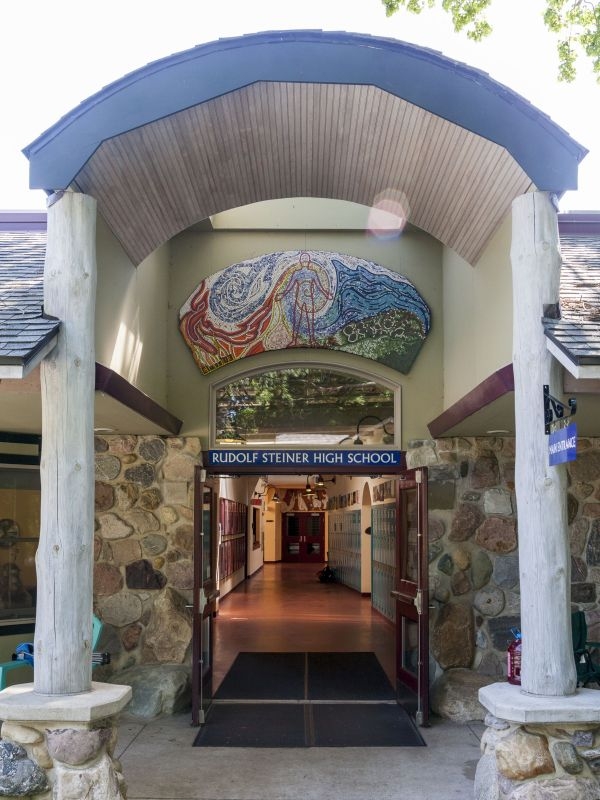
Selecting a High School
Advice from Veteran Waldorf Educators
Choosing the right high school can feel like one of the most significant decisions a family will make in their child’s educational journey.
To bring clarity to this decision, we turned to two of our most experienced educators at the Rudolf Steiner School of Ann Arbor: Margot Amrine, a longtime Waldorf teacher with over four decades of experience, and Dr. Siân Owen-Cruise, our former School Administrator, who has guided countless families through the high school selection process.
Today’s parents listen to and respect their children’s perspectives more than ever before- a positive shift in family dynamics. But as Margot reminds us, that doesn’t mean parents should surrender their leadership on big decisions.
“In our family we said that Waldorf Education for 9th and 10th grade was essential. At 11th grade, a different kind of maturity sets in; if our children had made compelling reasons to leave then, we would have considered. We never had these discussions!”
Dr. Owen-Cruise expands on this, acknowledging that social pressures play an outside role in an 8th Grader's thinking:
“It's natural for teenagers to focus on their peers and social dynamics when thinking about high school. As parents, we listen, we understand, and we take their feelings seriously- but ultimately, we need to lead this decision with wisdom and foresight.”
Dr. Owen-Cruise often frames the conversation with the rising student in the following way:
“Your parents will choose where you receive your high school education, with your input. YOU will choose where you go to college, with our parental input.”
Many families who have walked this path find that their children- whether they started in Waldorf Education or joined from another school-ultimately express gratitude that their parents guided this decision with their long-term development in mind.
Here are some other helpful tips and information when thinking about our own High School:
Waldorf Graduates Pursue Meaningful Careers
“Will My Child Succeed After Waldorf High School? The Research Says Yes” - Blog Article
Parents often ask: Does a Waldorf education prepare students for college, careers, and beyond? The answer is a resounding yes. Studies show that Waldorf graduates not only attend college at high rates but also excel in fields like science, medicine, law, and technology. Employers and universities consistently praise their ability to think critically, communicate effectively, and adapt to a changing world. Want to know why? This article dives into the research and real-world successes of our alumni.
The Joy of a Phone-Free School: How Our Students Thrive Without Screens
"The Joy of a Phone-Free School: How Our Students Thrive Without Screens" - Blog Article
In an age where screens dominate every aspect of life, imagine a school where students engage in real conversations, dive into hands-on projects, and focus fully in class—without the pull of notifications. Our phone-free policy isn’t just a rule; it’s a game-changer. See how it shapes our students’ social and academic lives!
The Joy of a Phone-Free School: How Our Students Thrive Without Screens
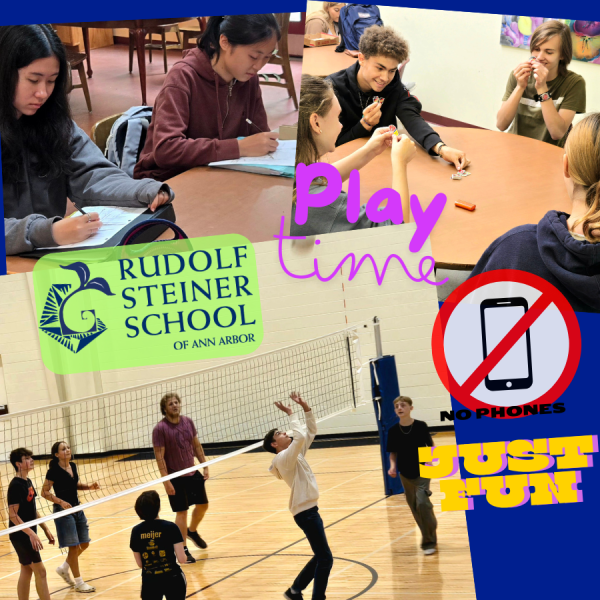
The Joy of a Phone-Free School: How Our Students Thrive Without Screens
Imagine a typical school day where students, between classes and during breaks, are glued to their smartphones—scrolling through social media, playing games, or texting. Conversations are sparse, eye contact is minimal, and the vibrant energy of youthful interaction seems subdued. Now, contrast this with a school environment where smartphones are set aside: students engage in lively face-to-face discussions, participate in spontaneous games, and immerse themselves fully in classroom activities without the constant pull of notifications. This is the reality we’ve cultivated at Rudolf Steiner School of Ann Arbor, embracing a phone-free policy that fosters genuine connections and holistic development.
The Deeper Engagement of Phone-Free Education
At our school, we’ve observed that removing smartphones from the school day does more than just eliminate distractions—it rekindles a deeper, more meaningful engagement among students. Freed from screens, students rediscover the joy of direct communication, collaborative problem-solving, and hands-on learning. This environment aligns seamlessly with the principles of Waldorf education, emphasizing experiential learning and nurturing the whole child.
We Are Phone-Free, Not Tech-Free
While our school maintains a phone-free environment during school hours, we are not devoid of technology. In fact, our curriculum incorporates technology in age-appropriate ways to ensure students are prepared for the digital world:
• Middle School: Students are introduced to computers and the internet in an intentional way that supports learning. Additionally, our middle school robotics club fosters interest in technology and engineering through hands-on projects. https://www.steinerschool.org/programs/extracurricular-activities.cfm
• High School: Our state-of-the-art computer lab facilitates courses in coding, digital literacy, and other computer science subjects. We also have an active high school robotics club where students collaborate on competitive projects that develop real-world problem-solving skills. https://www.steinerschool.org/about-us/waldorf-education.cfm
Many of our graduates go on to thrive in technology fields, excelling in computer science, engineering, and data analysis. Research shows that Waldorf graduates develop strong interdisciplinary thinking skills that prepare them for success in fields that require both creativity and technical expertise.
Leading the Way in Ann Arbor
Our commitment to a phone-free school day positions us as pioneers in the Ann Arbor educational community. While some other local schools have implemented partial restrictions, our comprehensive approach ensures that students remain unplugged throughout the day—including breaks and transitions between classes.
Several Ann Arbor schools are recognizing the value of limiting phone use:
• Forsythe Middle School and Tappan Middle School both require students to keep phones in lockers during school hours. https://forsythe.a2schools.org/our-school/cell-phone-policy, https://tappan.a2schools.org/our-school/cell-phone-policy
• Huron High School has introduced classroom phone storage policies in its Mathematics and English departments to help students stay focused. https://thehuronemery.com/9731/news/cell-phone-use-teacher-led-procedures-to-enrich-student-experience/
The Transformative Power of Disconnecting
The shift to a phone-free environment has yielded profound benefits:
• Enhanced Academic Focus: Without the allure of smartphones, students engage more deeply in lessons, leading to improved comprehension and retention.
• Strengthened Social Bonds: Face-to-face interactions during breaks and collaborative projects foster authentic relationships and empathy among students.
• Improved Mental Well-being: Reducing screen time has been linked to decreased anxiety and stress, allowing students to be more present and mindful.
Embracing a Connected Future Without Phones
As more schools recognize the value of limiting smartphone use, it’s evident that this movement is not about restricting technology but about reclaiming the essence of human connection and focused learning. By leading the way in this initiative, Rudolf Steiner School of Ann Arbor not only adheres to the foundational principles of Waldorf education but also prepares students for careers in STEM, the arts, and beyond.
We invite families seeking a nurturing, distraction-free educational environment to join us in this journey, where students can truly engage with the world around them and develop into well-rounded individuals.
Explore the experiences of other schools with phone-free policies:
• “New data reveals shocking trend since school mobile phone ban”
- “The big smartphone school experiment”
https://www.thetimes.co.uk/article/inside-schools-ban-smartphones-6knb8qtfc
- “Cell phones hinder classroom learning. Texas should tell school districts to lock them up”
- "Waldorf Schools are Media Literacy Role Models"
https://www.steinerschool.org/about-us/waldorf-schools-are-media-literacy-role-models/
How Waldorf Students Stand Out
With an increasingly competitive college admissions process, grades and test scores are no longer the final deciding factors for students to be accepted into the colleges of their choice. Applicants need to find ways to distinguish themselves from the crowd. Waldorf school graduates bring a unique perspective, set of experiences, and skill set. The Waldorf approach, which incorporates the arts, outdoor education and hands-on learning into academics, helps our graduates stand out as individuals. They are curious, creative, and confident, experienced in working with their peers, their hands and their minds. Their ability to listen, articulate their ideas, advocate for themselves and others, and work both independently and collaboratively helps them thrive in college and beyond. That is why colleges and universities across the country have recognized the degree to which Waldorf graduates enhance their student bodies.
Originally published by Ilan Safit – Humanities Teacher at Rudolf Steiner School New York City, Co-author of Into the World: How Waldorf Graduates Fare After High School, and Editor of the Research Bulletin for Waldorf Education
How do Waldorf students fare after graduation? How many of them go to college? What subjects do they choose to major in at college? Do they feel that their Waldorf education prepared them well for post-secondary studies? Did we, in fact, prepare them well for college? And then what? What do they do next? What professions do they choose for themselves? What kind of lives do they tend to live? How are they doing financially? How is there health? And are they—if we may dare ask—, at the end of the day, happy?
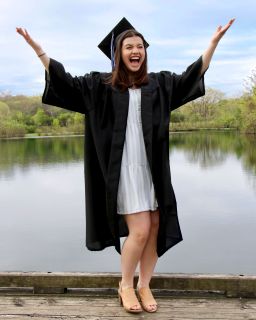 These are some of the questions that the Research Institute for Waldorf Education was set out to answer with its recent survey of Waldorf graduates in the book entitled Into the World: How Waldorf Graduates Fare After High School. Information was gathered through two extensive online surveys – one aimed to capture the experiences of those who graduated from a Waldorf high school in the past 10 years (and are therefore expected to be “college age”), another directed at those who are farther along on their life journey, as they had graduated high school in the period between 1990 and 2010.
These are some of the questions that the Research Institute for Waldorf Education was set out to answer with its recent survey of Waldorf graduates in the book entitled Into the World: How Waldorf Graduates Fare After High School. Information was gathered through two extensive online surveys – one aimed to capture the experiences of those who graduated from a Waldorf high school in the past 10 years (and are therefore expected to be “college age”), another directed at those who are farther along on their life journey, as they had graduated high school in the period between 1990 and 2010.
In addition, a small team of researchers working on this project conducted a set of interviews with recent and not so recent Waldorf graduates, both in a one-on-one setting and in groups. And we benefitted greatly from the online survey respondents who chose to elaborate further, and at times in great detail, about the aspects of their lives and their perception of the role that Waldorf education played in shaping them.
This offered us a narrative treasure-trove of personal impressions, perceptions, and reflections. From this qualitative data we’ve learned that Waldorf graduates cherish their schooling greatly and are aware of how it instilled in them healthy habits of learning, working, and living. They often feel that it has prepared them well for college by showing them how to learn and study, thereby enabling them to take on subjects and fields that they might not have explored in their secondary education.
Quantitative data collected through the online surveys show us a decisive portion of graduated (close to 46%), major in either the Social & Behavioral Sciences, Exact Sciences, or other STEM subjects, while 28% major in the Arts & Humanities. In terms of professions, we found the largest discernible group of alumni (15.5%) working in Education (across the full spectrum from early childhood to academia), followed by Medical and Health-related professions (12.3%), followed by those working in creative fields of Arts, Entertainment, and Media (12%).
A composite profile of the recent Waldorf graduate tells us that they (practically all) attend college, for which they feel strongly prepared (95%), are accepted to the top three colleges or universities of their choice (90%), complete their initial degree (92%), and often choose thereafter to continue to graduate or professional training schools. They also feel that their Waldorf education prepared them to be creative and innovative, open minded, empathic, and to take on leadership roles.
This, of course, is just a taste of the findings collected in the book resulting from this study, which contains also detailed comparisons with similar, nation-wide surveys conducted by the National Associations of Independent Schools, as well as in-depth analyses, interviews, and testimonials.
Integrating Science and Art with a Sense of Place: The Waldorf Senior Zoology Trip
Originally published in the Spring 2023 Renewal Magazine
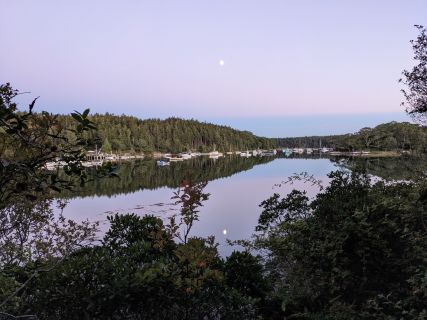 The sun has set, and the sound of the surf is heard just outside this empty wooden building. One hundred Waldorf seniors on this year's trip are out at the ocean's edge on the star-lit beach making ablution. They cleanse their hands, feet, and face in the cold ocean water, purify and calm their minds and then quietly open their senses to the nature of this island they will inhabit this week.
The sun has set, and the sound of the surf is heard just outside this empty wooden building. One hundred Waldorf seniors on this year's trip are out at the ocean's edge on the star-lit beach making ablution. They cleanse their hands, feet, and face in the cold ocean water, purify and calm their minds and then quietly open their senses to the nature of this island they will inhabit this week.
Slowly they re-enter the Kelp Shed, most holding the silence they were asked to keep. The room is dark, but a fire crackles loudly in the stone fireplace of this rustic, homey shed that serves as lodge for the summer campground. The rhythmical strumming of a guitar begins as the teachers sing a chant that has started each of these trips. "The earth ... the air. .. the water. .. the fire. .. return, return, return, return." As the music makes space, students join along singing, tentatively at first, but with growing confidence. Then silence. One teacher asks the group to imagine a picture of the quality of earth, and how it shapes this place and our lives. The rhythm of chant, silence, and picturing continues weaving through all four elements. Then silence. As the evening ends, the students and teachers file out to walk back to their campsites together. Another year of the senior zoology trip has begun.
Waldorf science education is rooted in a phenomenological approach. This means that observing phenomena is the key first step. Equally important is the reflective aspect of lessons where teacher and students grapple with previously made observations to come to meaningful relationships. We strive not just to fill the students with facts, but to awaken their capacities for observation, thinking, and artistic expression. Through engaged thinking, students are in the true process of "doing science," not just learning what other people have discovered. When taught well, science lessons awaken an interest in the world and in thinking more deeply about it. Doing this in the novel environment offered at Hermit Island on the Maine coast provides a capstone experience in the natural sciences. The artistic workshops connect the artistic realm to the scientific experience. Paintings, poetry, and observational drawings of marine invertebrates created by students in their field notebooks provide a true integration of art and science.
Student response to the trip has been enthusiastic. An international student from Ann Arbor told me. "I've seen all of the marine animals on TV. I felt like I knew everything about them. But when I interacted with them in the tide pools and observed the live animals under the microscope, I realized that I didn't really know anything. Now, I actually know them." Another student wrote a typical reflection about the week "I am tremendously grateful for this past week's endless opportunities. growth experiences, and lessons." Over the years, many have identified this as being a favorite experience of senior year.
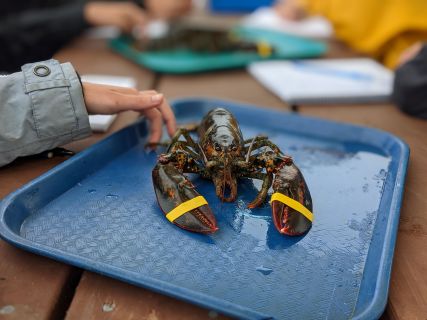 Recently, I had a conversation with Edward Edelstein, trip founder. His love for marine biology began while tide pooling and snorkeling for abalone on the coast of California as a high school student. As a biology teacher at Ontario's Toronto Waldorf School in 1993, Edelstein wrote a letter to all Waldorf High School biology teachers east of the Rocky Mountains proposing a senior trip to study marine zoology at Hermit Island, where he had vacationed with his family. He got only one positive response. Andy Dill from the Kimberton Waldorf School said he would give it a try and the first Hermit Island trip was launched with two schools in the fall of 1994.
Recently, I had a conversation with Edward Edelstein, trip founder. His love for marine biology began while tide pooling and snorkeling for abalone on the coast of California as a high school student. As a biology teacher at Ontario's Toronto Waldorf School in 1993, Edelstein wrote a letter to all Waldorf High School biology teachers east of the Rocky Mountains proposing a senior trip to study marine zoology at Hermit Island, where he had vacationed with his family. He got only one positive response. Andy Dill from the Kimberton Waldorf School said he would give it a try and the first Hermit Island trip was launched with two schools in the fall of 1994.
Year by year, attendance grew. At its pre-COVID peak there were 17 schools and over 240 students attending over two weeks. Over the past quarter century, several thousand Waldorf seniors have participated in this unique experience.
Zoology has always been at the heart of the trip, not just in the scientific work, but also in such details as the subjects of artistic projects, names of lab groups, and orchestration of evening campfires. Each day, one of the key invertebrate animal phyla (mollusks, annelids, arthropods, and echinoderms) forms the topic for the main lesson presented by collaborating teachers from each school.
Our study is deepened during the daily tide pool, microscope, and ecology labs, which are balanced by artistic workshops. Tidal rhythms sometimes require pre-dawn marches to the rocky shore so the students can experience the tide pools at a 6:00 a.m. low tide. These activities encourage students to enter genuinely into the context in which the marine invertebrates thrive. Experiencing them in their environment is key to understanding these animals. Hermit Island, with its unusual diversity of habitats, allows us to experience not only the animals in the context of their homes, but the amazing beauty of nature on this Maine coast.
An alumna of the class of 2013 recently shared the following reflections from her trip 10 years ago. "Hermit Island was a huge trip for me. I had never seen an ocean until we pulled up to Hermit Island. That alone was life changing. I had always wanted to experience being by an ocean so close to that expanse of water that is wild and calming and vast. [The trip] opened the senior year in such a unique way. It set that school year apart, making it special from the beginning. It allowed us to connect with people from other Waldorf schools. It allowed us to really bond as a group, away from the rest of the school. I don't have a single bad memory from that trip. I remember it in music, in the book whose author came to speak that I immediately bought at home, in sunshine, mud, pine trees, porcupines fighting in the trees, feeling free. I remember sitting alone on a cliff on our reflection morning and feeling so happy in that place.”
The opening evening ablution and elements circle sets the tone for the week. Sitting at the computer reflecting on the trip, the simple chant echoes on in me. "The earth, the air, the water, the fire, return, return, return, return.” These four elemental qualities contain deep wisdom. When I think of Hermit Island, the pictures of those qualities arise in me: sand, rock, and mud beneath our feet as we explore the different ecosystems; wind raising the surf and bringing the freshness of the ocean's salty water; cold tide pools, home to periwinkles, sea urchins, tunicates, crabs, and sea stars; the fiery sun warming us in the early morning's chill; the crackle of the evening's campfire, calling us to share and listen.
If you ask one of the students who attended the trip, “What happened in Maine?” you may get many answers, but key among the themes I have found are transformation, connection, joy, and amazement. We will continue sharing this experience with other Waldorf students and teachers as we return for another trip in September 2023.
.jpg/PXL_20210913_144803431(1)__427x320.jpg)
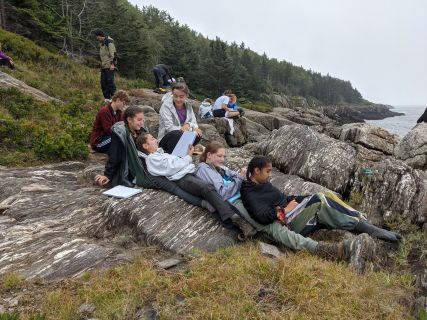
Education for an Unpredictable Future
Teens Feel Ready for College, But Not So Much for Work
A new poll found that 74 percent of high school students think they’ll have a job in 20 years that hasn’t been invented yet. How do schools prepare students for that future? In Waldorf education we focus on helping students develop creativity and problem solving skills, communication, teamwork, and empathy, as well as the ability to take their ideas and put them into practice in the real world. These skills are foundational, and prepare students to successfully navigate the unpredictable and rapidly changing world of work and the diverse paths to higher education.
This piece was originally published by Alyson Klein in Education Week
High schoolers believe that their educational experience is getting them ready for college. But they’re less certain that their coursework is preparing them for the world of work.
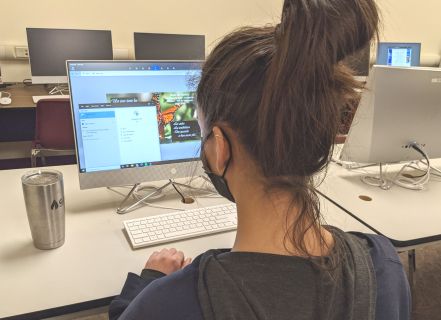
That’s one of the big takeaways from surveys published recently by the Ewing Marion Kauffman Foundation, a nonprofit philanthropy based in Kansas City, Mo. The survey found that 81 percent of students felt that high school got them “very” or “somewhat” ready for college, compared with just 52 percent who felt it prepared them for the workforce.
“People are coming out of this sort of either-or,” said Aaron North, the vice president of education at the Kauffman Foundation. “You’re going to college, or you’re not. You’re getting a job after high school or you’re not. I think that’s not reflective of the reality of what’s on the other side of that graduation stage for them.”
He expects that, in the future, many students will transfer in and out of the workforce, gaining both educational credentials and on-the-job experience.
The survey also found that students and adults in general expect that technology and computer science jobs will be a major growth industry, with 85 percent of adults and 88 percent of students saying they expect those gigs to be in “much” or at least “somewhat more” in demand in the next decade.
And 74 percent of students think they’ll have a job in 20 years that hasn’t been invented yet.
Students “have only grown up in an age of really accelerated tech evolution,” North said. “I think that’s just the world that they are in. It is a world of creation. It is a world of change.”
‘Practical Connection’ Needed
Overwhelmingly, students, parents, and employers surveyed thought high schoolers would be better off learning how to file their taxes than learning about the Pythagorean theorem. At least 82 percent of parents, students, and employers thought schools should focus more on the 1040-EZ form than on that fundamental concept in geometry.
And 81 percent of students said they thought high school should focus most closely on helping students develop real-world skills such as problem-solving and collaboration rather than focusing so much on specific academic-subject-matter expertise.
“I think what that highlights is this idea that there needs to be this practical connection between what and how you are learning when you’re in school and what happens when you’re not in school,” North said. “So that doesn’t mean it has to be directly related to your everyday life, but it does mean that there could be a balance between things that may be applicable to a very narrow number of fields and things that are highly applicable to your life no matter what field you go into or what path you choose.”
Employers are also more likely to rate employees highly if they have completed an internship in their industry and have technical certifications than if they only have a college degree, the survey found.
But at the same time, 56 percent of employers surveyed felt that someone with only a high school degree would be held back from success in life because of their education. Students were even more convinced of the benefits of college, with 63 percent saying that having only a high school education would be a roadblock to success.
Still, most adults—59 percent of those surveyed—said they can’t connect what they learned in high school to their current jobs. That’s especially true of workers in blue-collar jobs, 61 percent of whom say that their jobs weren’t relevant to their high school educations, compared with 52 percent of white-collar employees.
“Parents who have experienced a noncollege pathway understand that those pathways are viable and they can lead to really good options,” North said. “A huge percentage of our population ends up not getting a college degree. And so there are millions and millions of people out there navigating the nondegree world, without much of a road map, the kind of road map we’ve provided around college. So I think that’s reflective of people who have found that and are understanding that, whether it’s for themselves or for their own kids.”
Old Strategies, New Jobs
Similarly, a separate report released last week by the RAND Corp., found that the needs of the workforce have transformed dramatically thanks to technological changes, globalization, and demographic shifts. But K-12 schools, postsecondary institutions, and job-training organizations are preparing students for jobs using essentially the same set of strategies they’ve been relying on for decades.

At the same time, employers are struggling to find workers with so-called “21st-century skills” such as information synthesis, creativity, problem-solving, communication, and teamwork. Yet the path forward is not easy for workers looking to upgrade their skills because of automation or shifting consumer demands.
“Employers are saying they can’t find employees with the skills they need, and on the other end, you have workers whose jobs have been made less relevant,” said Melanie Zaber, an associate economist at RAND, a nonprofit research organization.
The blame shouldn’t be all on schools, the RAND report emphasizes. Employers and education and job-training institutions don’t do a great job of systematically sharing information with schools that would allow them to better prepare students for the changing needs of the workforce. Plus, funding for K-12 education isn’t equally distributed and often neglects the areas that need strong pre-career training the most.
What also makes progress difficult is that high school principals rarely get to see how their students are doing years after they leave the classroom, Zaber said. “Letting high school principals see what happens when students leave their doors can help inform policy for where the gaps are, where the barriers are, where students are being let down,” she said.
Weleda's Ties to Steiner
A long-time favorite in our school community and sold in our school store, Weleda products are on the cutting edge of regenerative farming and social responsibility, as well as being popular in the celebrity crowd. Here's a little history of the products, the mission of the company and its ties to Rudolf Steiner, founder of Waldorf education.
Originally posted in full by Chantel Tattoli in the New York Times on August 20, 2022
Calendulas look like daisies, smell like marigolds and possess powerful phytochemicals that can mend skin. At a garden in Schwäbisch Gmünd, Germany, Astrid Sprenger’s blond bob and turquoise pendant swung in the sun as she picked the fiery orange flowers by hand.
“It’s one of the only plants you can put on open wounds,” she said.
Dr. Sprenger, 56, who holds a Ph.D. in agricultural science from the University of Hohenheim in Stuttgart, is a head gardener at Weleda, a Swiss company perhaps best known for its ultrarich Skin Food cream. Sold in parrot green tubes, the moisturizer costs $12.49 an ounce.
Though Skin Food has gone by that name only since around 2010, its formula dates to 1926. In addition to extracts of calendula, it also contains concentrated forms of chamomile and wild pansy, as well as sunflower seed and sweet almond oils and beeswax.
The Skin Food line has expanded to include Skin Food Light, a less dense version of the original cream, along with a lotion and body and lip butters. According to Swati Gupta, Weleda’s head of e-commerce in North America, in 2020, the company sold a Skin Food product every five seconds. Weleda is developing new Skin Food cosmetics, including some for the face, with plans to debut them next year.
Farm to Tube
The plants used to make Skin Food and Weleda’s other products are grown worldwide. In Schwäbisch Gmünd, the 50-acre plot that Dr. Sprenger oversees runs wild-ish with some 260 species that include stonecrop and mistletoe. It is one of eight gardens owned by the company, which is based in Arlesheim, Switzerland, and sources from an additional 50 partner growers.
Occupying some 60,000 total acres, the web of gardens, which spans five continents, is roughly 70 times the size of Central Park.
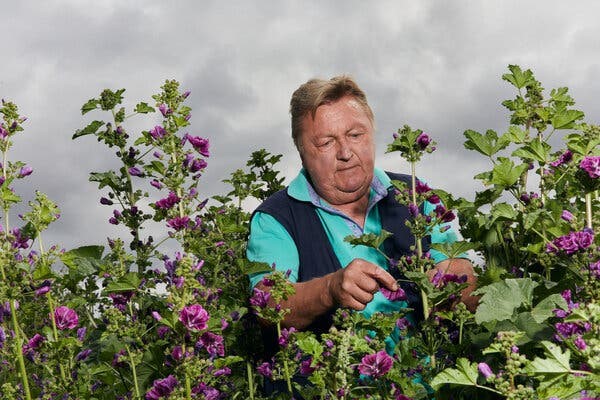
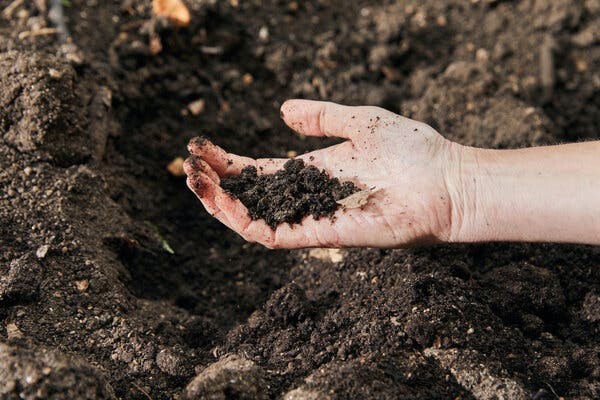
Last year, Weleda achieved B Corp certification, meaning its operations meet certain social and environmental criteria. It is also certified by the Union for Ethical BioTrade, which sets best practices for sourcing ingredients.
The gardens it owns are certified by Demeter, an organization that maintains the standards for the agricultural practice known as biodynamic farming, which Dr. Sprenger compared to regenerative farming — an organic method that focuses on soil health and forgoes elements of industrialized agriculture such as synthetic chemicals — but “on a higher level.”
The practice demands strict standards for biodiversity and soil fertility; at Weleda’s gardens, topsoil is not tilled and crops are both rotated and intercropped, or grown together in the same plot, with three to 10 other species. Another tenet of biodynamic farming is composting. “It’s not like poo,” Dr. Sprenger said as she plunged a trowel into a dark mound that disgorged bugs and a heady herbal odor. “It’s nice!”
The compost she was sifting through contained homeopathic additives, or preparations, made from fermented plants including yarrow and valerian. Preparations are also a requirement of biodynamic farming, and others are sprayed directly onto soil or crops. One, called horn manure, does include excrement. It is made by packing cow dung into cow horns that are buried underground for the winter and dug up in the spring; the dung is then extracted from the horns, swirled into rainwater at body temperature and flicked at the soil with a brush, not unlike how a priest sprinkles holy water.

Some growers see preparations as magic potions of sorts, claiming they sensitize soil to cosmic rhythms. Followers of what’s known as the biodynamic calendar sow, plant and reap crops based on the positions of the sun, moon, planets and stars. (While not necessary for Demeter certification, some of Weleda’s gardens operate this way, but not the one in Schwäbisch Gmünd.)
More demonstrable benefits of the preparations, Dr. Sprenger said, include fungus control, increased microbial diversity, nitrogen stabilization and the ability for soil to sequester larger amounts of carbon.
Calendulas grown in Schwäbisch Gmünd are used to produce Weleda’s Comforting Cream Bath cleanser for babies. “In high season, we encourage our office employees to help with the harvest,” Dr. Sprenger said.
Those used in its Skin Food products are farmed biodynamically near Frankfurt and transported to a lab in Schwäbisch Gmünd, just five minutes by foot from the garden, where they are heated in sunflower-seed oil at around 155 degrees Fahrenheit, cooled and pressed into a concentrate that is then incorporated into various formulas.

Steady Growth
Weleda’s first gardens, in Switzerland and Germany, were in operation at the time it was formed in 1921 by Ita Wegman, a physician, and Rudolf Steiner, a New Age philosopher who two years earlier opened the first Waldorf, or Steiner, school. Then known as Futurum AG, it has since inception produced pharmaceutical as well as cosmetic products (only the cosmetics are sold in the United States).
Both the company and the school were influenced by the spiritual science movement anthroposophy. Also founded by Steiner, its adherents believe that everything in nature is interconnected. Before he died in 1925, Steiner gave a series of lectures on alternative agricultural techniques, which laid the groundwork for what later became known as biodynamic farming, said Peter Staudenmaier, an associate professor of history at Marquette University in Milwaukee.
Steiner and his followers wanted “to heal the earth,” said Dr. Staudenmaier, who specializes in the political history of environmentalism. “Their mission was to regenerate the soils that had been abused and despoiled by industrial processes,” he added.
Steiner’s thinking about agriculture continues to inform that of the company he co-founded, which in 1928 was renamed Weleda in a nod to Veleda, a Germanic priestess and healer who lived during the first century A.D.
“One of the most important things that we as a society can do to combat the effects of climate change is more regenerative agriculture,” Rob Keen, the chief executive of Weleda in North America, said.
“Select Steiner teachings are not reflective of Weleda’s guiding principles upon which we were founded more than 100 years ago and by which we continue to be guided today,” he added.
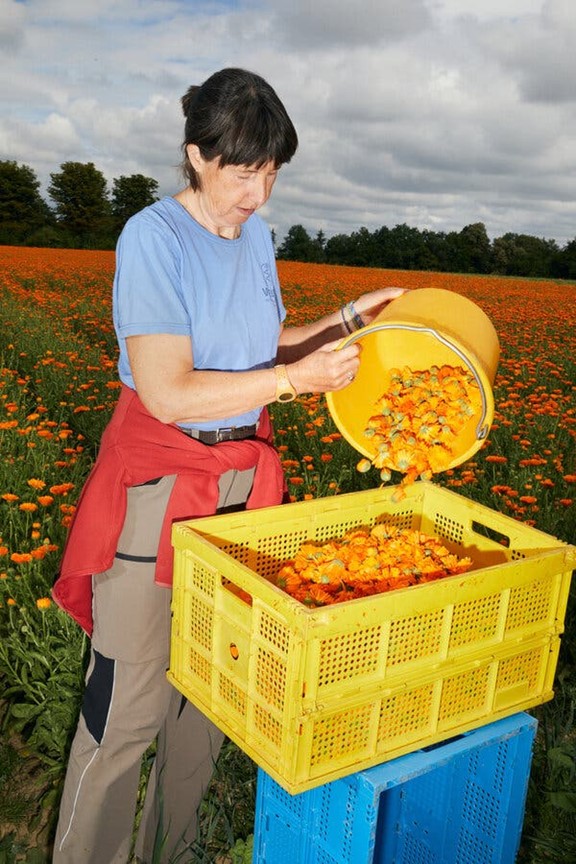
By 1931, five years after it introduced what would one day be called Skin Food, Weleda had opened an arm in the United States. Ahead of and during World War II, the company conducted business with the Nazi Party in Germany. It later made an effort to reconcile with this period in its history by issuing an apology to Holocaust survivors and opening its archives for academic research. Dr. Staudenmaier explored the Nazis’ connections to Weleda and other biodynamic growers in a 2013 research article. “Like any historian, I do wish that a company like Weleda would pay more attention to the complexities in its own history,” he said.
Domestically, its products were mainly sold at independent pharmacies and health food stores until 1984, when the grocer Whole Foods began to stock them.
According to Ameena Meer, who formerly worked as a creative director for Weleda in North America, Skin Food started to become more widely popular in 2017, around the time that consumers began to seek products that promised “dewy, glowy, glassy, glazed” complexions. The next year, Ms. Meer developed a marketing campaign to modernize Weleda in the United States, where she said it had a reputation as being old-fashioned.
Both the campaign and the renewed interest in Skin Food helped to usher in a “cool comeback” for Weleda, said Ms. Meer, 59, who lives in Los Angeles and now works as a wellness consultant and psychic. Major retailers that currently sell its products include Amazon, Target and, as of last year, Walgreens and CVS.
Food for Thought
“It’s thick,” Morgan Jerkins, a writer in New York, said of Skin Food.
“I feel like if I wear Weleda Skin Food, I’m going to be OK if I walk to the subway in February. I feel like it’s going to put up a fight.” Since she started using the product, Ms. Jerkins, 30, added that she has not had a need for foundation.
Skin Food also has fans in celebrities such as Gwyneth Paltrow and Sharon Stone. “I always have it in my set bag,” said Fiona Stiles, a makeup artist in Los Angeles who works with famous clients. “It’s so humectant!”
Ms. Stiles, 51, has carried the cream in her kit for 15 years. She particularly likes to use Skin Food as a topper, applying it with her palms onto the apples of clients’ cheeks for “a very even highlight.”
The product smells citrusy and, vaguely, of vanilla and bell pepper. “I imagine that people who love Campari, Ricola cough drops and the fragrance Bistro Waters, by the perfumer D.S. & Durga, tend to gravitate toward its scent,” said Porochista Khakpour, a writer in Los Angeles. Ms. Khakpour, 44, first discovered Skin Food more than a decade ago, in Berlin. “It’s deservedly iconic,” she added. “If someone is carrying it, I think they’re in the know.”
This year, Weleda promoted the Skin Food product line as part of a campaign to raise awareness of its agricultural practices. Called Save Earth’s Skin, it features the model Arizona Muse, 33, as its face. Ms. Muse, who lives in Ibiza, is also the founder of Dirt, an organization that funds biodynamic farming projects.
As a child, Ms. Muse attended Waldorf schools in Santa Fe, N.M., and Tucson, Ariz. She credits her interest in agriculture to her mother, who introduced her to Steiner’s anthroposophy movement, from which biodynamic farming was born.
“This is such a deeply protective approach,” Ms. Muse said of the method.
In the Save Earth’s Skin campaign, she compares soil to human skin, encouraging a twist on the golden rule: Do unto the planet’s dirt as you would your own epidermis.
Standing on the Shoulders of Gnomes
When we think of progress, many people refer to the “giants” who propel an organization forward. In reality, it’s all the “gnomes” who do the hard work that makes a community successful. This is certainly the case for Rudolf Steiner School of Ann Arbor. With humble beginnings in a three-room building near Cobblestone Farm in 1980, and eventually a home for our K-8 program on Newport Road, our growing community of inspired parents and teachers had a vision for a full PreK-12 program.
A high school study group was active for many years and eventually, the College of Teachers hired Agaf Dancy in 1996 to spend a year preparing to welcome 22 ninth and tenth graders in the fall. A valiant effort was made by Robert Black, Margot Amrine, Becky Schmitt and Judie Erb to build the high school on the Lower School's Newport Road campus, but there was resistance in the surrounding neighborhood. Judie proposed the Genesis building on Packard Road and Agaf found the ideal faculty team of Mary Emery (Humanities) and Geoff Robb (Science), who were trained Waldorf high school teachers. Navigating precarious waters, Judie, Margot and Fred Amrine won over a reluctant Board and in the fall of 1997, 22 high school students attended classes in the basement of the Genesis building.
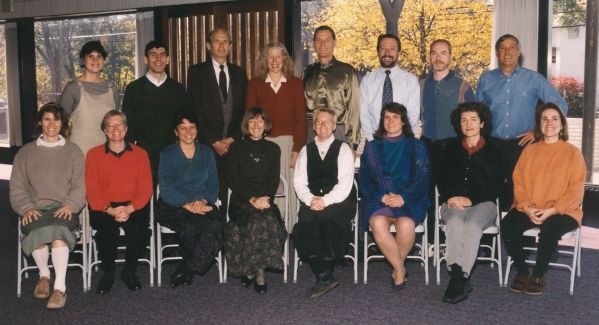
Ashlea Walton (HS’ 01) recalls, “It didn’t matter that our classes were small or that we were learning in a basement. Ms. Emery and Mr. Robb, along with the other faculty, made us feel part of a family and the subject areas were enlivened by their enthusiastic approach to teaching.”
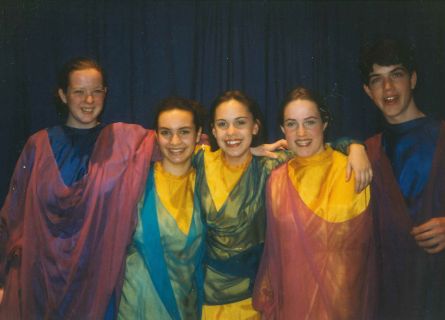
Caroline Freitag (HS '02) has known since 7th grade that she would be a Waldorf teacher and is now in her seventeenth-year class teaching, working right here at RSSAA! As one of the pioneering high school students, Caroline didn’t realize initially, “… but I was seeking a high school experience where I was seen by my teachers and peers. These strong personal relationships, along with a wide array of educational opportunities and trips, led me to pursue a college experience that offered the same things.”
Mary and Geoff led an amazing team of supporting faculty including Elena Efimova (Art), Robert Santacroce (Eurythmy), Erica Choberka (Biology), Janice Sanders (Instrumental), Barbara Brown (Bookbinding & Basket-weaving), David Van Eck (Technology) and Margot Amrine (History).
Erica Choberka was a teaching assistant at University of Tennessee, Knoxville and started her high school teaching career at RSSAA. Along with teaching most of the science classes, she briefly taught gym and writing as well - it was all hands-on deck. As a twenty-something herself, she would sometimes hear students listening to “Sublime” on their boombox and resisted the temptation to join them (she was a fan).
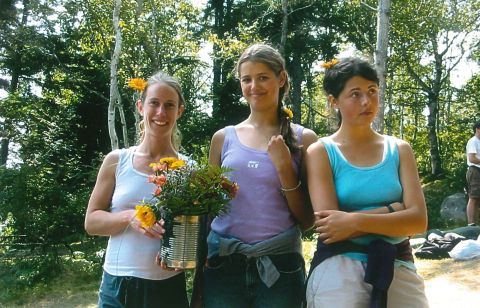
Elena Efimova held classes in her home art studio, where students were bussed daily. Her whole house was open to the students - snacks and drinks in the fridge, bathroom in the master bedroom, and a “hotel lobby” in the living room. Some students even stayed for dinner if their parents showed up late. The first senior mosaics (the Five Elements) were created by the first graduating class of five students and now hang in the hallway at the Lower School.
Eventually, we needed more space and in October 2001, a six-acre homestead and factory, located on Pontiac Trail, was purchased to be the permanent home for our growing high school. A staunch group of eager, professional volunteers, who dubbed themselves "The Four Musketeers" (Tim Vachon, Victor Leabu, Robin Grosshuesch and Robert Black) donated both skilled labor and materials to improve the Frame House and the Stone House buildings on the property into administrative spaces. The generous support of key donors, like the Fox family and Erb Downward family and Seyhan Eğe, empowered a whole host of volunteers from families, students, staff and faculty to put the final touches on the former factory building, built by Christman Company and sub-contractor Brivar. The new campus opened in the fall of 2002.
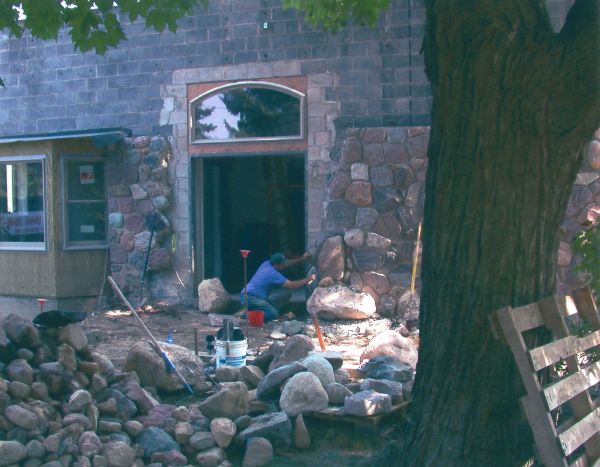
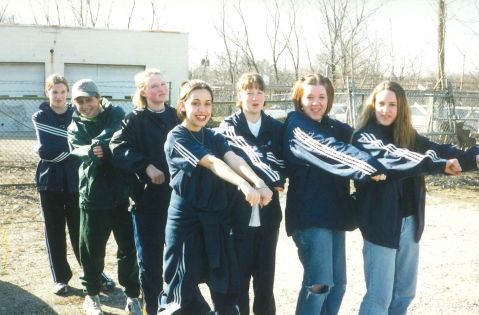
When Evan Schmitt (HS ’01) reflects on his time at RSSAA, “I don’t think a day goes by where I don’t apply the lessons I learned during my time at the Steiner School. So much of my job is talking with organizations about their role in creating a fairer, more secure, and more equitable global economy where individual rights are respected and protected. The seeds of that ethos were planted in me every day I walked into that school…by the teachers, the community, and my fellow students”. As a junior, Evan was key in organizing the first basketball team, coached by Bob Cosey. The sports teams gained momentum, sometimes “borrowing” 8th graders to complete the teams.
In 2008, RSSAA received our largest gift, a bequest of $834,000 from Seyhan Eğe’s estate. This gift paid for a dedicated middle school building in 2016 and launched the Inspire. Create. Lead. Capital Campaign for a high school campus expansion of a gym, lab, classrooms, and performance spaces in 2018, solidifying the commitment to a full PreK-12 Waldorf education.
Although our spaces are beautiful and inspiring, it’s our faculty that make our school an exceptional experience for students and families. A high school parent recognized that during the pandemic, everyone was managing stressful situations and our faculty and staff were doing the same. However, they were also striving to provide the best experience they could for our students along with taking pay cuts to balance the budget. That is devotion.
These stories have reminded us of where we’ve been and how many involved families helped us get there. We are entering the next phase of our development, with seeds being planted to eliminate debt and build an endowment, to create an outstanding Waldorf educational experience that supports our students with outstanding educators, passionate administration, facility maintenance, and financial stability.
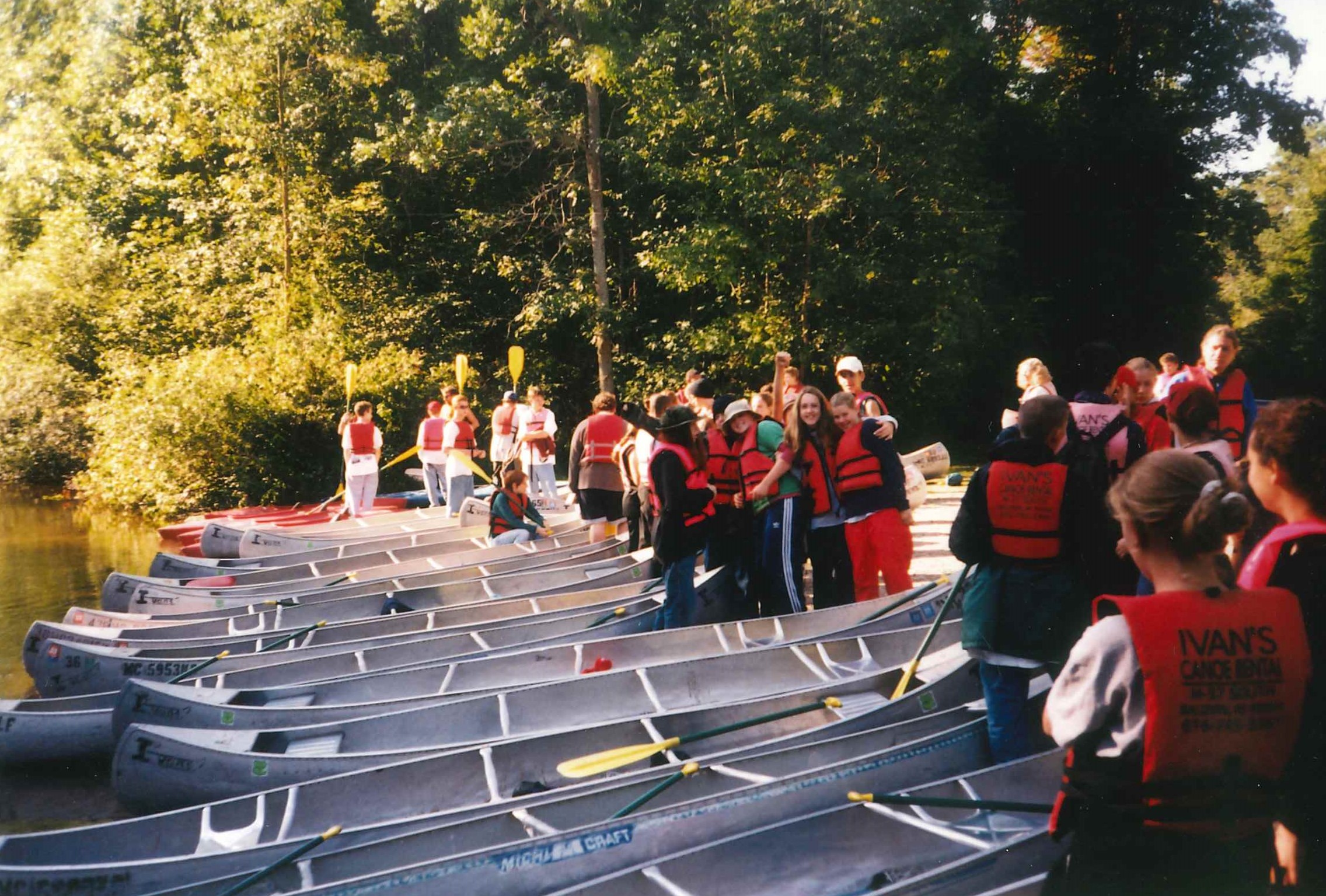
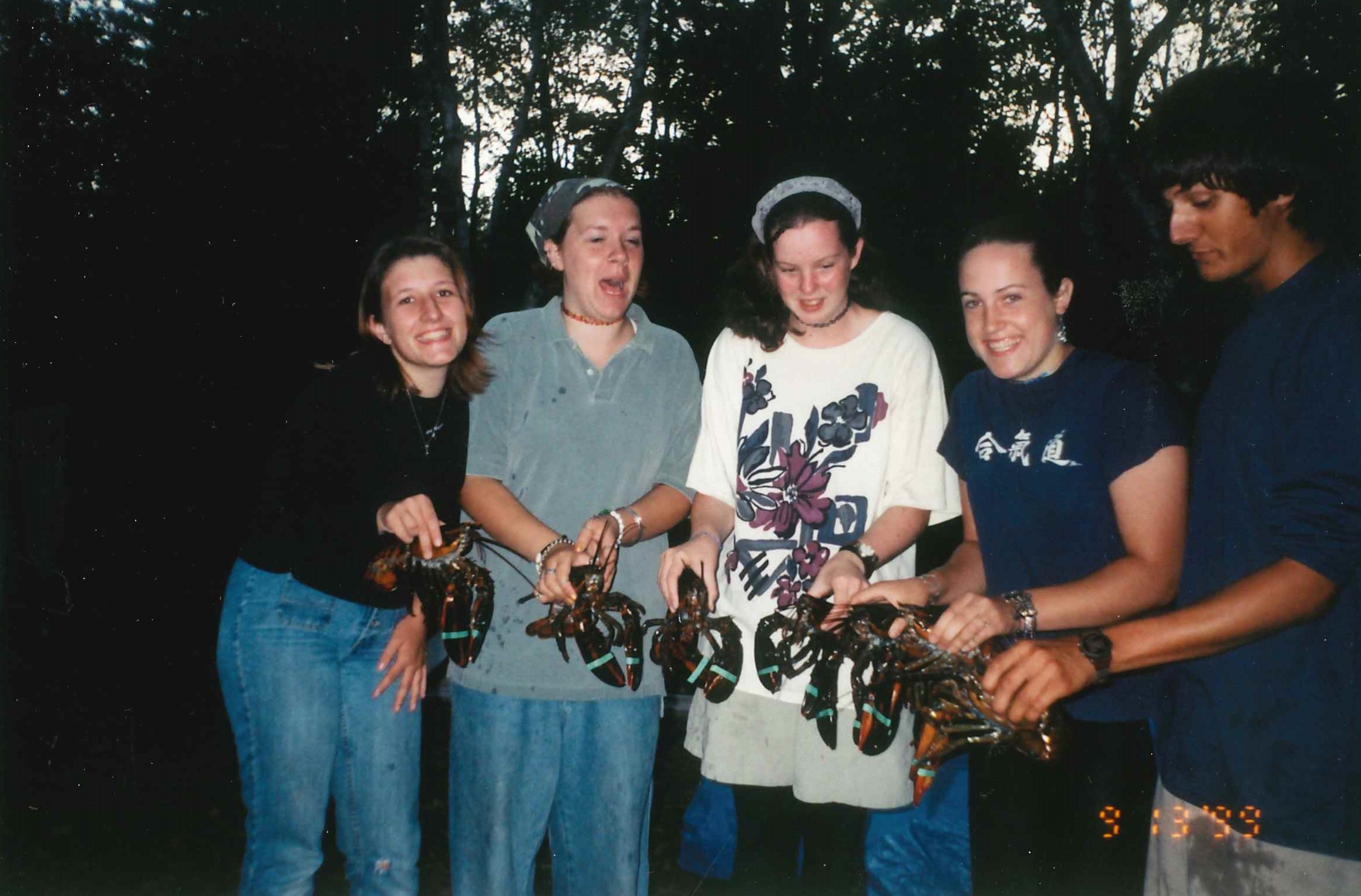
International High School Students Find a Community at RSSAA
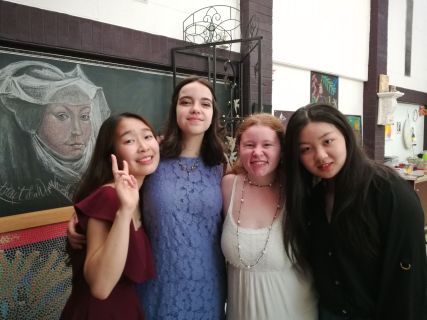 Motivated students and families from around the world look for immersive experiences at American high schools where they can learn English, absorb American culture, and prepare for post-secondary education at English-speaking institutions. As the Waldorf movement continues to grow around the world, some international parents are looking for a Waldorf high school experience when their own country doesn’t have a program established. At the same time, there are international families who have never known about Waldorf education, but appreciate the liberal arts curriculum, community feeling, and host-family experience the Rudolf Steiner High School offers. Over the past 18 years, 75 international students have found their way to Steiner High school and have emerged with skills and relationships that have prepared them for their next steps in life.
Motivated students and families from around the world look for immersive experiences at American high schools where they can learn English, absorb American culture, and prepare for post-secondary education at English-speaking institutions. As the Waldorf movement continues to grow around the world, some international parents are looking for a Waldorf high school experience when their own country doesn’t have a program established. At the same time, there are international families who have never known about Waldorf education, but appreciate the liberal arts curriculum, community feeling, and host-family experience the Rudolf Steiner High School offers. Over the past 18 years, 75 international students have found their way to Steiner High school and have emerged with skills and relationships that have prepared them for their next steps in life.
Mary Zeng (’21) deeply appreciates her experience here. What was important to her, and her family, was to find a school that assisted her learning English along with broad academic coursework. Thanks to our smaller classes, she was able to form supportive relationships with her teachers that continue today. Her immersion in American culture with a Rudolf Steiner School of Ann Arbor high school family both dramatically increased her acquisition of English and gave her a caring environment to navigate her high school years. She sees the relationships she built with classmates, her host family, and the wider Ann Arbor community, as her home-base in America as she attends University of Massachusetts - Amherst.
When Vivian Wang’s (’17) parents were trying to find an American high school for her to attend, they were looking for a good experience both with an English-speaking family - so she could learn the language and culture - and an academic setting that appreciated both the sciences and the arts. Vivian’s host family had a 1-year-old child and they loved getting to know Vivian and 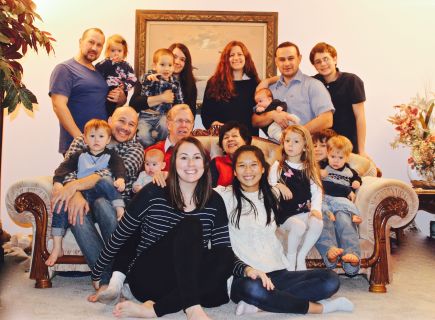 helping her study for classes and learn English. She continues to stay in touch with them and they even helped her move to Atlanta to attend Georgia Tech. Vivian also appreciated the strong relationships she had with her teachers, where she was encouraged to ask questions and be proactive in her learning.
helping her study for classes and learn English. She continues to stay in touch with them and they even helped her move to Atlanta to attend Georgia Tech. Vivian also appreciated the strong relationships she had with her teachers, where she was encouraged to ask questions and be proactive in her learning.
For Irene Zhang (’21), two of the reasons she came to RSSAA were to continue studying at a place that was more artistically oriented, and finding a home-life experience in a city that was safe. In Ann Arbor, she lived with a Chinese-American family who had small children and she had a marvelous experience. She became a part of their family, and they treasured the opportunity to learn from her. She looks forward to visiting them during breaks from her studies at Tufts University.
The host-family experience is just as rewarding as the educational. For many, the international student becomes a part of the family, participating in their customs, meals, and celebrations. Irene’s host mother, Bing Li, found the hosting experience wonderful for her family with two young children. During the pandemic, they got to spend even more time with Irene and she truly became part of their family. High school families enjoy a peer-to-peer experience that can enhance the high school years for their own student as well as their guest student. Some past host families are looking forward to hosting another international student when the opportunity arises.
The city of Ann Arbor is attractive to many international students because of its safety, a large international community (especially for Asian students) and being within the vicinity of the University of Michigan. For a teenager, Ann Arbor provided 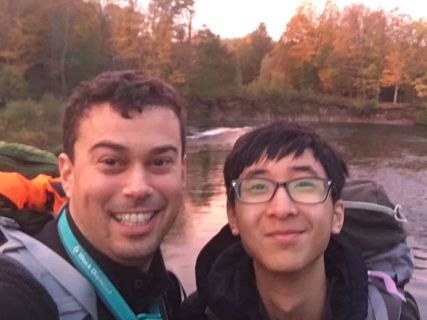 outlets beyond school to connect with others. Mary took tennis lessons at a local club and explored the various teen locales in the region. Irene attended UM football games with friends and immersed herself in artistic experiences. Learning soccer was exciting for Vivian, and she found the coach very helpful and her teammates welcoming. Students also can participate in a variety of after-school clubs, like Model United Nations, that connect them in new ways to their American classmates.
outlets beyond school to connect with others. Mary took tennis lessons at a local club and explored the various teen locales in the region. Irene attended UM football games with friends and immersed herself in artistic experiences. Learning soccer was exciting for Vivian, and she found the coach very helpful and her teammates welcoming. Students also can participate in a variety of after-school clubs, like Model United Nations, that connect them in new ways to their American classmates.
International students at RSSAA also form bonds with each other as they take English as a Second Language (ESL) classes, led by skilled ESL teachers who become a reliable support-system to complete their academic coursework. For some students, these teachers become a sounding-board for other questions or concerns they have during the school year.
Our international students have found a well-balanced program at RSSAA that brings the warmth of a family experience while undertaking an American high school education. For international students and host families alike, an impactful, life-changing experience can happen, and relationships are created that can continue years after graduation!
If you're interested in learning more about how you can help create an amazing experience for an international student, please reach out to Sian Owen-Cruise at sowen-cruise@steinerschool.org.
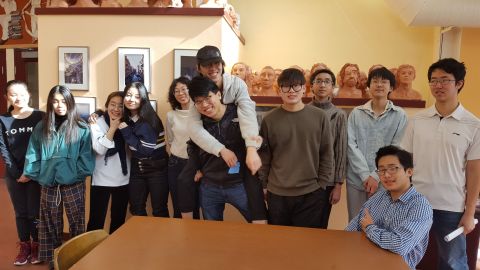
Arts, Advocacy & Recognition by the Library of Congress
Working to rebuild community and identity in the aftermath of the Vietnam War.
Bryan Thao Worra is a talented Laotian American writer, poet and community activist and has forged a path connecting experiences of refugees with the restorative aspects of writing. Born in Vientiane in the Kingdom of Laos, Bryan was adopted at three days old by an American pilot named John Worra, who flew for Royal Air Lao. He arrived in the U.S. six months later and eventually settled with his family in Saline, Michigan. He joined the Rudolf Steiner Lower School in it’s fledgling years (early 1980’s), when the school had mixed grades and only two classrooms. After graduating from 8th grade at RSSAA in 1987, he went on to Saline High School and eventually Otterbein College.
Bryan’s leadership in the writing community is being acknowledged during a livestreamed event at the Library of Congress on May 2 in recognition of Asian American and Pacific Islander Heritage month. Appreciating his accomplishments, we reached out to him in order to learn a little about his thoughts on his Waldorf education and ideas around the arts and advocacy.
Your work over the last 20 years has focused on refugee resettlement and the arts. Can you tell us how you’ve connected with refugees through your writings and Southeast Asian diaspora?
The last two decades have taken me across the globe, searching for others who were scattered in the diaspora that followed the end of the Southeast Asian conflicts of the 20th century. I'd understood that many of the elders who were so fundamental to understanding how and why we are in America were passing away even as the younger generation didn't always know how to ask the questions they needed to preserve their family and community histories. In the United States, and in many parts of the world, those who don't understand their roots are often among the most easily exploited and many will find themselves adrift if they cannot understand who they have been, and how to express a future they see themselves in.
One aspect of my process has involved committing to a range of stories, poems, artworks and presentations on both the historical and the wildly imaginative, the cosmic and the everyday and to encourage my fellow refugees to consider different ways of expressing their own experiences and dreams. To give them the freedom to feel that it's ok to risk and to write more than one story, one poem, one idea to pass on to the next generation.
You joined RSSAA as a very young person. What do you remember about your experience with Waldorf education that has shaped your poetry and writing, or you as a person?
At first it was a startling experience, but a wonderful challenge engaging both my logical and creative sides. Our teachers there helped me find the confidence and initiative to direct my own learning and response to given lessons. One of the most important parts of that experience was creating my own textbooks. That absolutely impacted how I eventually made chapbooks and poetry collections later, and my enthusiasm for having experience on all sides of the publishing process. RSSAA prepared me for high school and college in such a way that I often felt way ahead of my peers and even a little out of place, enthusiastically seeking knowledge and ideas to share with others. It was always surprising to meet others who didn't have that energy and motivation. My years with RSSAA encouraged me to form lifelong friendships and to explore the deep connections between everything and to see my own experiences had a relationship to it all.
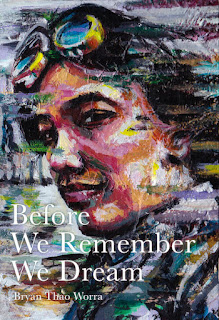 What role did the arts play for you as you grew up?
What role did the arts play for you as you grew up?
Growing up there weren't many books about my culture and my heritage in the encyclopedias or in popular culture. There was no clear timeline that helped me understand those essential questions: "Who am I? Where do I come from? Why am I here? Where are we going?" The arts provided a way to risk, and to experiment, to pose questions. They weren't legal depositions, but could often touch on great truths while I explored the questions of my identity and what it might mean to reconnect with others to rebuild our community after the war. Initially this was often a rather non-linear process but it became essential, much like the process in solving a jigsaw puzzle.
Do you have advice for young people who want to pair the arts with advocacy?
There are many ways to articulate a vision for a better world. Sometimes by showing a new model of possibilities, sometimes through warnings of unintended or even intended consequences. Each technique has its uses and limitations, and an artist will always face a particular risk with advocacy: Do we reinforce the existing arguments or dismantle them for something better? Pushback is possible with both. We have to commit to learning as much as we can on a given issue, and then we have to give ourselves permission to risk a new way of expressing what matters to us. And sometimes, an artist must find ways to avoid the inertia that comes from waiting for "the perfect" and instead seek "the good" and "the necessary" at a given point of time. As you get started, the key thing to remember is that you don't need to be the last word, but a word that gets the conversations started to create change.
